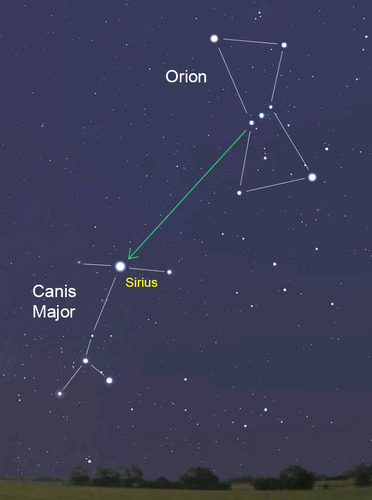^LOL, Primary sources = Blair and Robertson's (from which most of these English translations of Spanish accounts are derived from---which in turn they got from a lot of latter Filipino historians ie Retana, Pardo de Tavera, Medina, Rizal etc.) book. I'm almost certain it's required to own for all post-grad Filipino historians. If you have a Nook (not sure about Kindle) but it's for sale on Barnes and Noble.
These I found trying to find an digital copy of a book written in 1967 by Schlegel on the Tiruray's folk astronomy. I couldn't find it (all the Filipino libraries require $$$, m2thefvckr$ -lmao), but I found this.
Names of constellations (and singular stars and planets) in Filipino (and other Austronesians)...credit are given by the blogger to Ambrosio (whom I quoted much above) and an Aussie academic (M. Osmond). A lot of them are already said above.
from here
[url] http://sambali.blogspot.com/2008/05/star-and-constellation-names.html [/url]
All pics are from Astrobob Blog (all are from N. Hemisphere)
[url] http://astrobob.areavoices.com/ [/url]
[B]Words for Stars and Constellations [/B]
(PMP = Proto-Malayo-Polynesian; POc = Proto-Oceanic; Mic = Micronesian; Pn = Polynesian; Ph= Philippine)
[B]Venus, Morning Star, Evening Star[/B]
PMP *mantalaq -- 'the morning/evening star, Venus' (Austronesian Comparative Dictionary (ACD))
PMP *(t)ala(q) -- 'star' (Dempwolff)
Big Bird -- constellation that includes [B]Betelgeuse, Canopus, Procyon, Rigel and Sirius[/B]
PMP *manuk -- 'bird'
POc *manuk -- 'bird, Bird constellation'
Mic: Satawalese man -- 'constellation incl. Sirius'
Adm: Ninigo mānifono ‘Sirius’ (fono ‘head’)
Mic: Kiribati pwāpwā-ni-man ‘Sirius’ (pwāpwā ‘chest’)
Mic: Puluwatese yinekin-mān ‘Sirius’ (yinek ‘body, trunk’)
Pn: Tahitian taurua-faupapa ‘Sirius’
Pn: Maori takurua ‘Sirius; winter’ (Åkerblom 1968:19)
Pn: Marquesan takuua ‘Sirius; July’
Pn: Hawaiian kaulua ‘Sirius; June-July or February-March’
Ph: Palawan Binawagan magakas 'Sirius'
[B]Pleiades[/B]
POc *bulu(q) -- 'a constellation, Pleiades' (Osmond, ACD *puluq)
[B]Southern Cross[/B]
Proto-East-Oceanic *bubu -- 'Southern Cross; triggerfish'
Fij: Bauan kalokalo-ni-ðeva ‘Southern Cross’
Pn: Anutan te kupeŋa ‘The Net: Southern Cross’
Pn: Tikopia te kau kupeŋa ‘pole-net handle’
Pn: Rennellese kau-kupeŋa ‘Southern Cross; net handle, net frame’
Pn: K’marangi tina ti raŋi ‘Southern Cross’
Pn: Tikopia te uru a taŋata ‘Southern Cross’
rakau tapu ‘Southern Cross’ (Lewis 1994:407)
Pn: Hawaiian hōkū-kea ‘Southern Cross’
Ph: Sama bunta 'Southern Cross'
Ph: Tagalog camalyng 'Southern Cross'
Ph: Spanish-Tagalog Krus na Bituin 'Southern Cross' ('cross of stars')
Ph: Bikol paglong 'Southern Cross'
Ph: Ilokano sunay 'Southern Cross'
Ph: Ivatan-Spanish trismariiya 'Southern Cross' ('three Marias')
The Pointers (Alpha and Beta Centauri)
[IMG]  [/IMG]
[/IMG]
Pn: Samoan lua taŋata ‘Pointers: Alpha and Beta Centauri’ (Åkerblom 1968:27)
Pn: Tikopia rua taŋata ‘Southern Cross’ (Lewis 1994:407)
Pn: Tokelauan na taŋata ‘two stars used for voyages from Tokelau to Samoa’ (MacGregor 1937:89)
Pn: Anutan rua taŋata ‘constellation of two bright stars near the Southern Cross. Centaurus, also known as te kau o te kupeŋa ‘handle of fishing net’’
Ph: Sama, Jama Mapun anak-datu at sahapang 'alpha and beta Centauri'
Ph: Tagalog timbangan 'alpha and beta Centauri'
Mic: Puluwatese fūhQ mwakət ‘Polaris’
Mic: Satawalese fuese magut ‘Polaris’
Mic: Carolinian fise mwç xut ‘Polaris’
Mic: Woleaian werewereri iyefaŋi ‘Polaris’
Pn: Tahitian ana-nia ‘Polaris’ (Lewis 1994:403)
Pn: Hawaiian hōkū-paa ‘Polaris or North Star’
Ph: Sanskrit-Maguindanao bituin utala 'Polaris' ('north star')
Ph: Sanskrit-Sama mamahi uttara 'Polaris' ('north star')
Ph: Jama Mapun sibilut 'Polaris'
Mic: Marshallese mQ clεp ‘constellation Aquila, Altair’ (lit. ‘big eye’)
Ph: Maranao dalomampao 'Aquila'
Ph: Manobo lepu 'Aquila'
Ph: Sama paliyama 'Aquila'
Ph: Palawan sagab 'Aquila'
Ph: Teduray singkad 'Aquila'
Ph: Jama Mapun tanggong 'Aquila'
Proto-Central-East-Pn *refua ‘a star name, Antares?’ (Biggs & Clark 1993)
Proto-North-Pn *mele-mele ‘Venus or Antares’
Ph: Sama mamahi pagi
Ph: Jama Mapun niyuniyu
Ph: Palawan njug + wasaj
Ph: Sama Dea salokah
Ph: Ibaloi tachong
Ph: Maranaw anak o karani 'Delphinus'
Ph: Manobo buu 'Delphinus'
Ph: Teduray kenogon 'Delphinus'
Ph: Kankanaey sipat 'Delphinus'
Ph: Palawan tarung 'Delphinus'
"Now, in the Malayo-Polynesian culture, zenith stars had practical uses linked with navigation and thus Spica would be considered a zenith star for any location only for a certain period. The declination of Spica and other stars changes because of the movement of the Earth's axis. Although neither Osmond or Ambrosio mention Spica, it is found in regional astronomies. For example, in Tahiti it was one of the pillar stars and was known as Ana-rota. It was called Mataroa in Kiribati, Aap in Truk, Paulauru in the Carolines and Da in the Marshall Islands.
In the Austronesian region, the conjunction of the Moon with specific stars is often used in electional astrology. The conjunction of the Full Moon with specific times in the tropical year is also used to detemine the new year, most notably in connection with the well-known swarming of the Palolo sea worms.
Among the Kodi of Sumba in Indonesia, the year indeed is determined by the Zenith Moon, when the Full Moon conjoins or passes nearest to the local zenith. About seven days after this time, the Palolo worms emerge (Janet Hoskins 1993: 65, 72, 353, 358).
Now, the Moon would mainly transit the zenith in tropical areas, but the Moon has different declination limits than the Sun. Thus, the Moon can transit the zeniths at latitudes up to 28.5° N or S. The period when the Full Moon would conjoin with Spica about 45 days before the vernal equinox, as in the Chinese calendar, corresponds to the late 4th millennium BCE."




